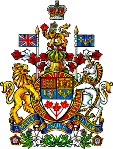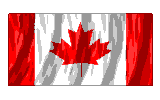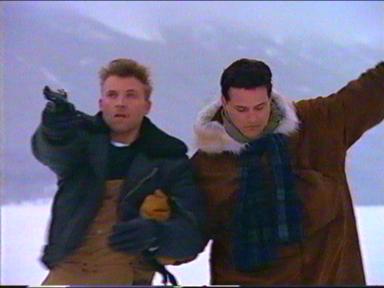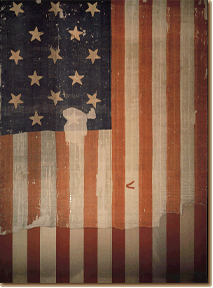 Loryn's Due South Shrine - A Brief Canadian History Tutorial
Loryn's Due South Shrine - A Brief Canadian History Tutorial
French explorer Jacques Cartier, who reached the Gulf of St. Lawrence in 1534, is generally regarded as the founder of Canada. However, English seaman John Cabot sighted Newfoundland in 1497, and Vikings are believed to have reached the Atlantic coast centuries before either explorer. When Cartier set eyes on the Labrador coast, its bleakness prompted him to dub it the land God gave to Cain.
The name Canada probably originated with a Huron-Iroquois chief who took Cartier to visit his village near the site of the city of Quebec. Chief Donnacona used the word Kanatta (collection of huts). Cartier mistakenly assumed that this was the name of the whole country and entered his spelling of the name in his records.
In Upper and Lower Canada (now called Ontario and Quebec) & in the Maritimes, legislative assemblies appeared in the 18th century. The War of 1812 broke out. It was a conflict between Britain and the U.S. fought mainly in Upper Canada. It ended in stalemate in 1814. Rebellions in Upper & Lower Canada broke out in 1837 over political agitation for more democratic government. Lord Durham was sent by Britain to investigate, and his 1839 report recommended union of the two colonies into 1 called Canada. This union lasted until Confederation.
Canada achieved nationhood on 1 July 1867 with the passaged of the British North America Act. At that time, it consisted of the mostly autonomous province of Nova Scotia, New Brunswick, Quebec, & Ontario, united in one Dominion under the name of Canada. Some other names considered at the time of Confederation were the Kingdom of Canada, Laurentia, New Britain, Cabotia, Columbia, Britannica, Boretta, Mesopelagia, & Ursalia. The Confederation has been enlarged by the entries of Manitoba (1870), British Columbia (1871), Prince Edward Island (1873), Saskatchewan and Alberta (1905), and Newfoundland (1949). Also in the political map are Yukon Territory and the Northwest Territories. On 1 April 1999, a new territory, Nunavut, will be created from the central and eastern Arctic regions of the Northwest Territories; it will be a self-governing homeland for the 17,500 Inuit living in the territories.
Each of the 10 provinces is largely self-governing, with its own miniature parliamentary system, premier, cabinet, & legislative assembly. The federal government deals with matters of national & international importance. It also has direct jurisdiction over the territories. The provincial governments have a wide measure of autonomy over such things as natural resources, education, health, & law. Each province has the right to maintain legations in foreign countries. This federal structure has created strong provincial loyalties, except in Quebec.
In 1931, Canada gained complete autonomy under the Statute of Westminster. By the Constitution Act of 1982, the British Parliament formally surrendered its ammending power over the Canadian constitution. Also that year, the Charter of Rights and Freedoms guaranteed human rights.
Canada is an independent member of the Commonwealth of Nations. The British Commonwealth is a voluntary association of self-governing nations in which there is no central authority and, in fact, no political structure. All the member states, even those which are republics, recognize the Queen as the symbol of their free association & as head of the Commonwealth, but she has no power as such. The member nations jointly support a Commonwealth Secretariat in London with standing committees on agriculture, mining, forestry, shipping, air transport, telecommunications, & economic matters.
The Queen's title for Canada is Elizabeth the Second, by the Grace of God of the United Kingdom, Canada and Her other Realms and Territories Queen, Head of the Commonwealth, Defender of the Faith. The Queen acts in Canada through an appointed governor-general.
The capital was originally called Bytown and was rechristened Ottawa (the name of a local Indian tribe) in 1855. Queen Victoria chose it as a compromise candidate for Canada's seat of government in 1857 over rivalling Toronto and Montreal.
For a list of the Canadian Prime Ministers since Confederation, please click here.
Back to Index.
 |  |  |  |  |  |  |
| RCMP Characters | RCMP Tutorial | Canadian Tutorial | CPD Characters | CPD Tutorial | Due South Songs | News Desk |
 Loryn's Due South Shrine - A Brief Canadian History Tutorial
Loryn's Due South Shrine - A Brief Canadian History Tutorial
 Loryn's Due South Shrine - A Brief Canadian History Tutorial
Loryn's Due South Shrine - A Brief Canadian History Tutorial






